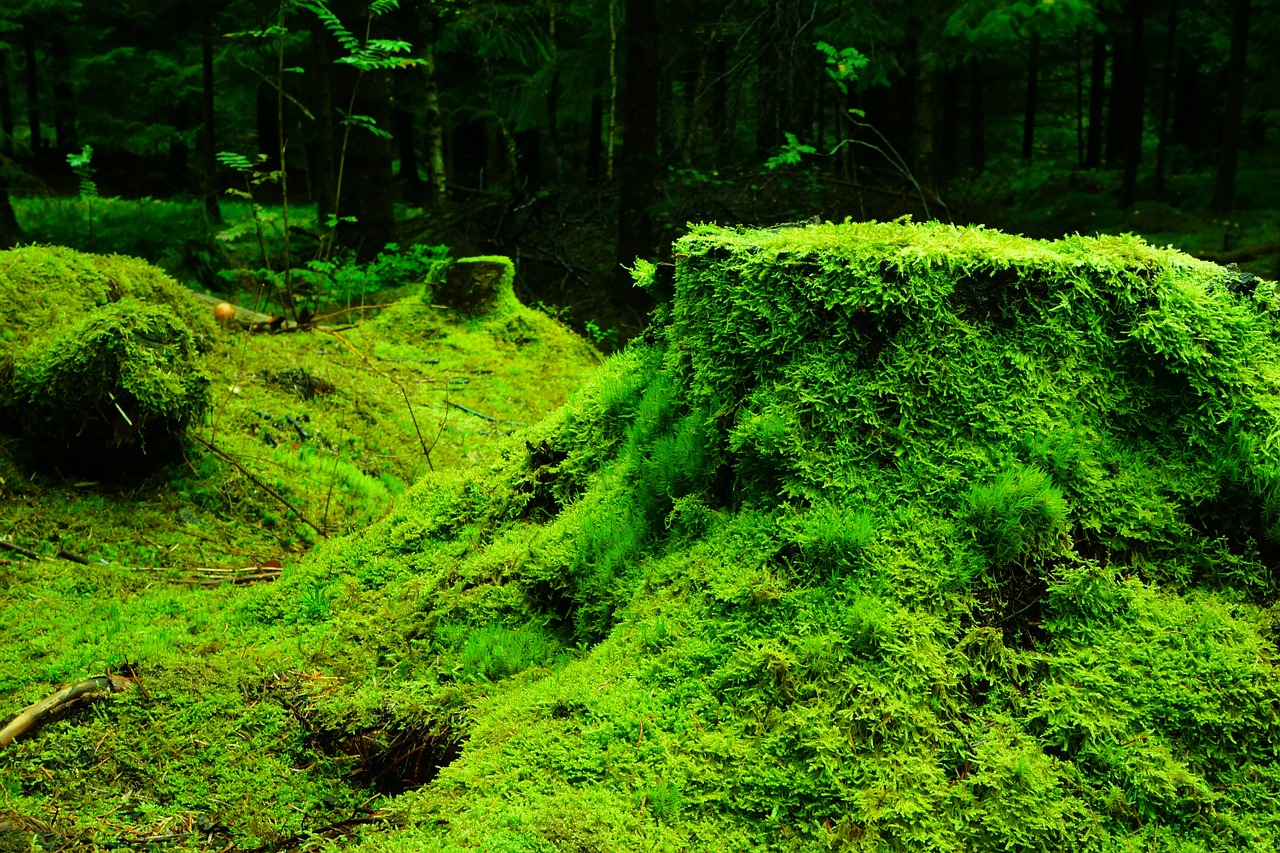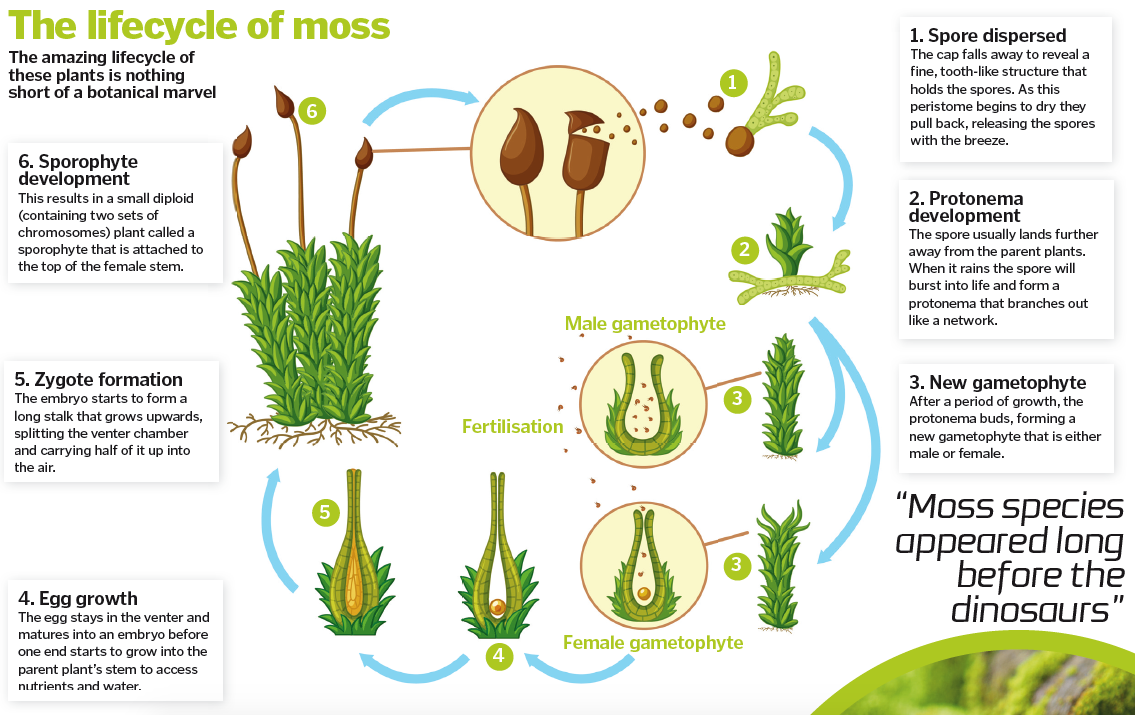Mighty moss: how these ancient plants have survived for millenia

These must be one of the most overlooked types of organism, but tiny, non-flowering mosses are one of the oldest land plants known to Earth.
Mosses are thought to have first appeared in the Carboniferous period (around 358.9–298.9 million years ago) of the Paleozoic era, long before the dinosaurs, and they have remained virtually unchanged. Their spectacular survival skills have allowed the primitive plant to prosper on the planet, with their characteristic endurance reminiscent of their aquatic ancestry. On Earth today there are approximately 12,000 species of moss, typically seen thriving as green carpet-like mats across forest floors or sprawling around tree trunks. Instead of seeds, mosses have evolved tough spores to give rise to new plants.
They also lack the normal structures associated with liquid transport (the xylem and phloem) and so cannot take substances up through their roots and have no way to move liquid around the plant. Instead, mosses rely on obtaining their water and nutrients directly by absorbing the resources into their leaves while using threadlike rhizoids instead of roots to anchor themselves into the ground. This means that in order to thrive they need to be almost completely saturated with water.
Mosses have a special trick up their sleeve when they find themselves in unfavourable, hot conditions: they are able to almost completely halt their metabolism when stressed. By slowing their biological processes, they are able to wait patiently until water is available again and they can burst back into life.

The many uses of moss
Mosses unique insulating and absorbing characteristics have meant we’ve relied on it in many parts of the world and throughout human history. Moss has been used for drinking water, decoration, food and shelter over the years. Otzi (the famous over 5,000-year-old preserved mummy found on the Austrian-Italian border) was found with large quantities of moss stuffed in this clothes, likely for insulation, but it could also be used as food packaging and even toilet roll.
During World War I, Sphagnum mosses were used to dress wounds and stem bleeding from injuries and, if you’re severely dehydrated, you theoretically could wring them out and drink the water from it. Today, we continue to harvest moss for fuel and as a soil additive, and they continue to play a large role in the smoking of malt to produce Scotch whisky.
For more information about science and technology, visit our website now. If you have a tablet or smartphone, you can also download the latest digital version onto your iOS or Android device. To make sure you never miss an issue of How It Works magazine, subscribe today!
Other articles you might like:
Bringing the plants of Pandora to life
Killer plants: how do these carnivorous plants capture, kill and eat living prey?




